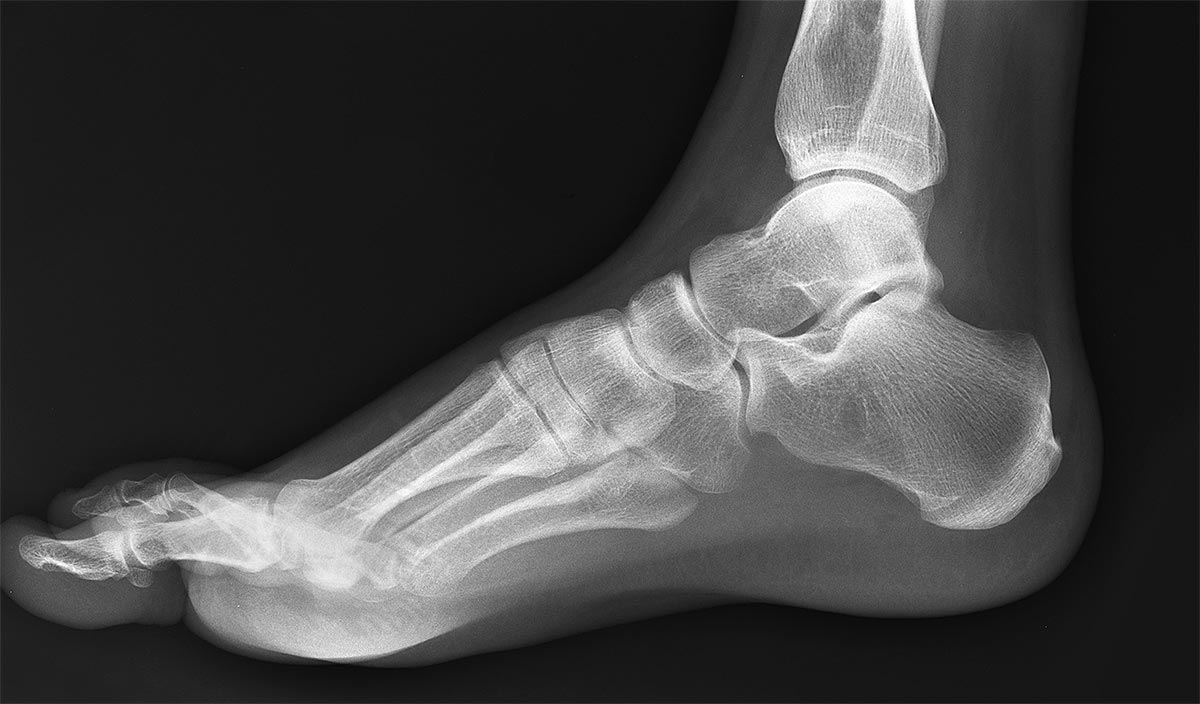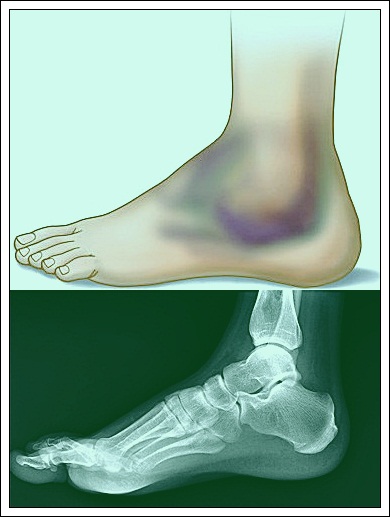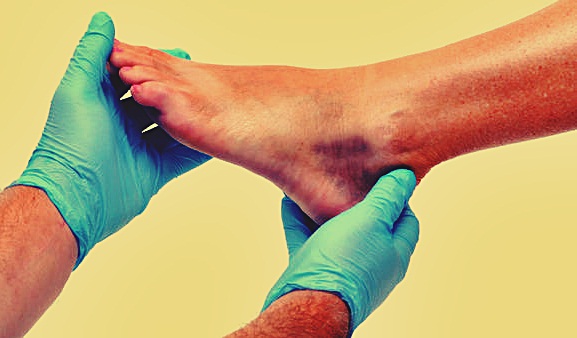Broken foot refers to a fracture or cracks in any of the foot bones. In most cases, the region around the fracture becomes tender and bruises may also appear. It is important that one should not place any weight on such a foot until it has been assessed by a doctor and proper treatment given.
Children suffer broken bones than adults
Adults have bones that are stronger than tendons and ligaments. On the other hand, the tendons and ligaments of children are usually stronger than their cartilage or bones. Due to this factor, even minor injuries that can only lead to a sprain in adults can cause a serious fracture or broken bone in children. However, the forefoot of children is very resilient to various types of injuries because it is more flexible as compared to that of adults.
In children, it is difficult to notice phalangeal or metatarsal fractures even on X-rays because majority of a child’s body parts are still growing. As a result, it is important that the doctor get the X-ray of even the uninjured foot for comparison with the hurt one.
Causes of broken foot
Car accidents are the leading causes of broken bones. Crushing injuries experienced in road accidents often leave one with a broken leg. Such injuries are mostly severe and could require surgical repair to correct the broken bone.
Falling and tripping can also cause a bone to be broken. This happens when one lands on the ground from meters high on their feet. The bones are strained leading to an injury. The chances of a fracture from such falls are usually high.
Impacts from heavy loads on the feet are another cause of fractures. This is common in industries, factories and construction sites. It can also happen at homes where people pile material carelessly. Poorly piled up materials could fall on people and cause serious accidents.
Missteps can also cause a bone to get broken. At times when people place their foot down incorrectly, it leads to fractures or broken toes. The same can happen when people knock their feet accidently on furniture or other hard surfaces.
Symptoms of broken foot
Broken bones result in swelling and severe pain on the foot. The pain is often too much that a person cannot walk. However, if the break is in the toe, the pain is usually less and one can even walk. Bruises are common on the broken bone. It should be noted that sprains can also lead to severe pain hence it is not all swelling, pain, and bruising that suggests a broken bone.
Treatment
The treatment to be administered depends on the bone that is broken and the extent of the injury. Some of the treatments include; casts or splints, putting flat bottomed shoes, use of crutches and surgery to correct affected bones.
Crutches help the patient walk when their feet are hurt. The crutches should be the right size and used correctly. One should be trained on how to use them before they are given a pair to take at home with them. When you use clutches, put most of your weight on the hands and arms. One should avoid putting the weight on the armpits as it could harm the nerves in the underarms. The clutches should be used on firm grounds to avoid falls.
When to consult a doctor
It is recommended that you consult a doctor when you suspect you have a broken bone in your feet. If the injury is minor, the doctor will examine you in his or her office but when the injury is more serious, he or she will refer you to the emergency department. If one suspects his or her foot is broken and it is not possible to reach his or her doctor immediately, then it is advisable that he or she consults the emergency department for investigation.
If one is suspecting that he or she has a broken foot and the following conditions are evident, it is advisable they go to the emergency department immediately:
- The foot is cold, blue, numb or if it looks deformed
- One has a deep cut or wound on the area he or she suspects the bone could be broken
- One is experiencing severe pain.
Broken Foot – Healing time
Bone healing is complex and takes different periods of time depending on individuals and the extend of injury. There are many factors that determine the speed and success of the healing process. Age of the patient, extent of the fracture, nutritional status, and medical condition of the patient are among them.
It takes about six to twelve weeks for a broken bone to heal to a good extent. Bones of children heal faster than broken bones of adults. A surgeon or a doctor will advice when it is healthy for the patient to put any weight on the affected foot.





